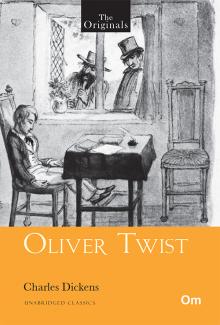THE ORIGINALS OLIVER TWIST (UNABRIDGED CLASSICS)
Born on 7 February 1812, in Portsmouth, Charles Dickens was one of the greatest novelists of the Victorian era. He created some of the most intriguing fictional characters in literature. The author's success began with the 1836 publication of the Pickwick Papers, following which he became an international celebrity. Known for his humour, satire and incisive representation of society through his characters, his literary triumphs include A Tale of Two Cities, David Copperfield, Oliver Twist, and Great Expectations. A literary colossus of his time, he wrote 15 novels, 5 novellas, hundreds of short stories and non-fiction articles. He even performed for Queen Victoria in 1851. Such was the charisma of the author that the term Dickensian, is still used to describe situations reminiscent of his narratives. Literary stalwarts like Leo Tolstoy, George Orwell and G.K. Chesterton admired him for his comedy, prose style and realism. The quintessential Victorian author died in 1870, and was buried in Westminster Abbey. ... Read more Read less
Charles Dickens’ second novel, Oliver Twist, or The Parish Boy’s Progress, was first published as a serial (in monthly instalments) in the magazine Bentley’s Miscellany from February 1837 to April 1839. The novel was inspired by Robert Blincoe’s account of his childhood spent in a cotton mill. Oliver Twist, an orphan, is born in a workhouse and later sold off into an apprenticeship. Dickens situates his protagonist amid the squalid lives of beggars, criminals and petty thieves. Trapped in a world of corruption and poverty, Oliver with his pure heart is rewarded with a fairytale ending. The dark reality of child labour, the effects of industrialisation and the condition of orphans in London in the mid-19th century form the crux of Dickens’ heart-rending novel. ... Read more Read less











